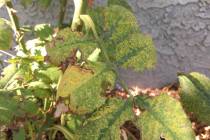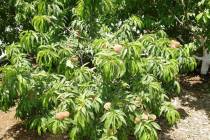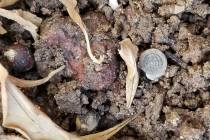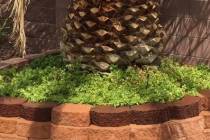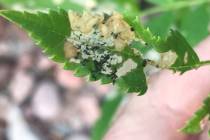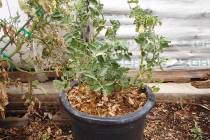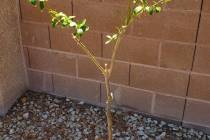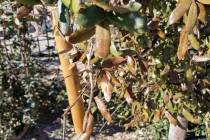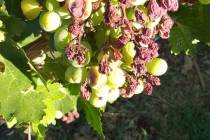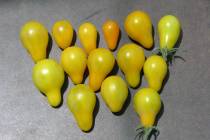Rock placed on top of the soil contributes to a soil problem, but wood chips won’t. Spraying the plants with iron fertilizer might be a temporary fix but not a long-term one.
Search results for:
My Saturday, four-week class, “Fix Your Landscape” will start Oct. 26 in North Las Vegas. This weekly landscaping class will show you design tricks that save water and electricity, plant selections that work, planting methods that are successful and how to fix problems, and irrigation installation and how to water.
Snails and slugs love where it’s wet. They also love food. Food and moisture make a perfect breeding area.
Landscape microclimates change something about the outside: the air temperature, wind speed, humidity, noise level or may address privacy issues.
Skeletonizer insect damage is common to Tecoma in warmer parts of the Southwest. It’s feeding damage by the young — or larvae — of a moth given the common name Tecoma leaf tier skeletonizer.
You can harvest fruit from tomato plants when it’s hot, but they won’t set fruit again from new growth until the temperature drops back into the mid-90s. Either pull the tomato plants when they’re done producing and plant new ones from seed or prune the old ones back and let them flower and fruit again when it’s cooler.
Somewhat tender plants like roses and crape myrtle can handle the intense desert heat and sunlight if they are growing in soil amended with organics and the soil is covered with mulch that rots or decomposes. Roses and crape myrtle will struggle after a few years when planted in soils covered by rock
The high population of aphids this year was caused by our wet and humid spring weather. The fastest way to get rid of them is to drench the soil beneath the tree with a systemic insecticide diluted in a bucket of water.
Grasshoppers start cute and small with small appetites and jump from plant to plant. But as they grow bigger, their increased appetites cause more and more damage to landscapes.
Tomatoes stop setting fruit when air temperatures stay consistently above 95 degrees. The tomatoes that set earlier continue to grow and mature when it stays hot. If the air temperature drops below 95 for a couple of days, new flowers will again set fruit.



